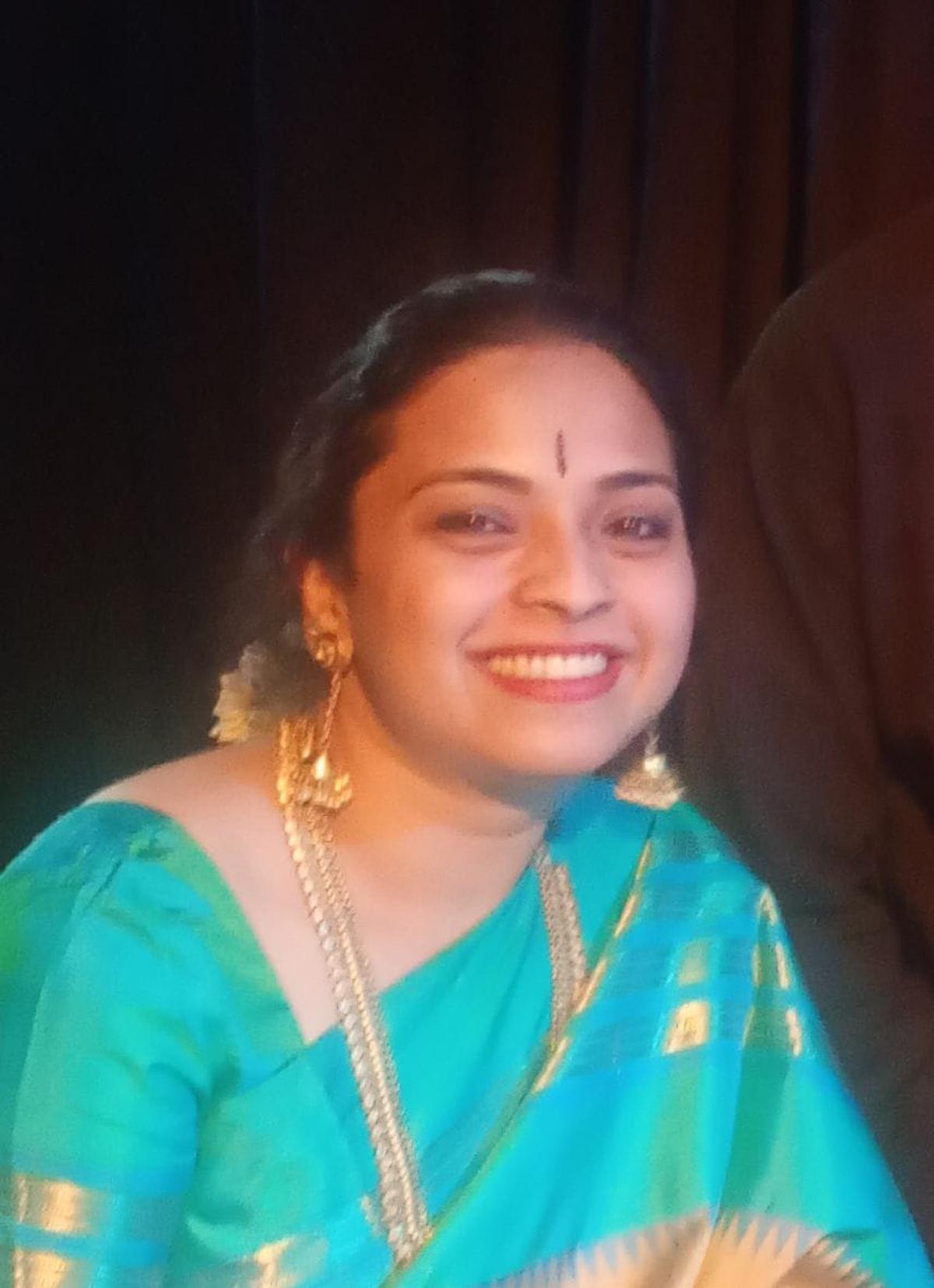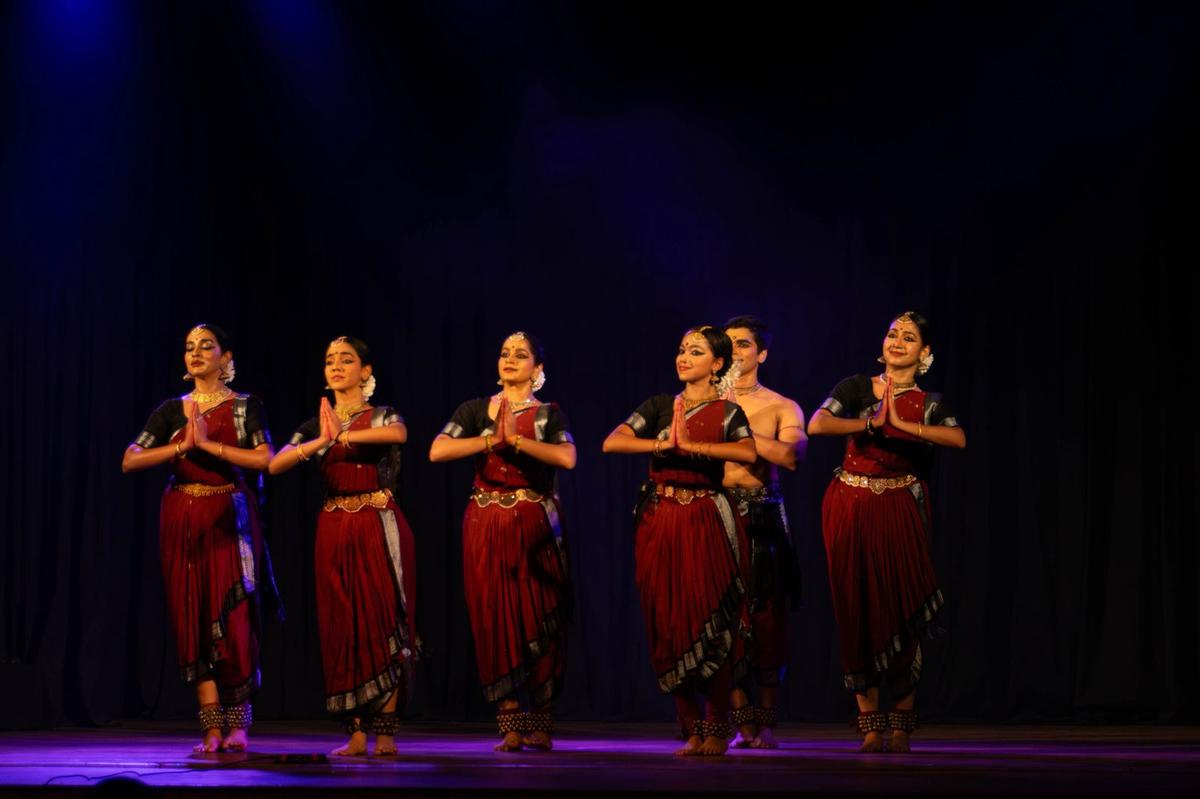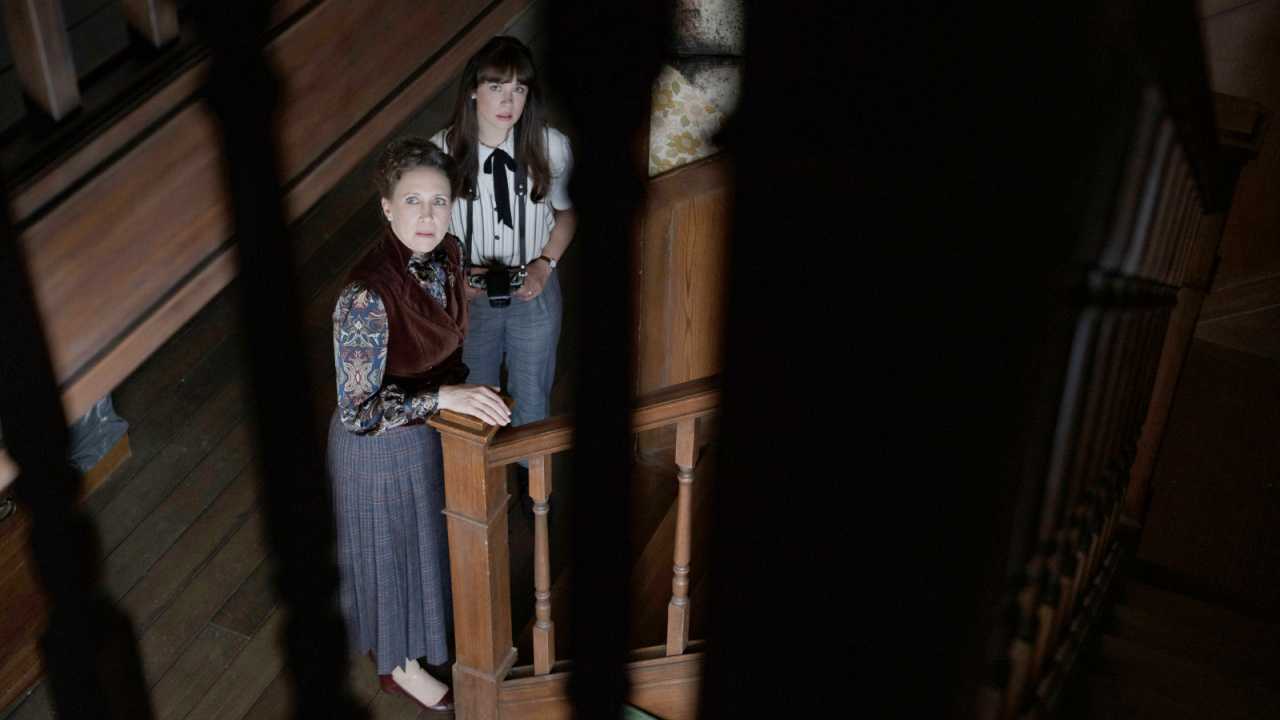
Parshwanath Upadhye, Aditya P.V. and Shobith Ramesh
| Photo Credit: Courtesy: Natyarangam
The fourth edition of Vaggeyakara Bharatham, organised by Natyarangam, featured a collaboration between Carnatic vocalist Aishwarya Vidhya Raghunath and dancer Parshwanath Upadhye. The duo explored a few compositions from the vast repertoire of songs frequently sung in concerts.
Alternating between solo and group presentations, the evening began with ‘Sree Maha Ganapathi ravathumam’ — a composition by Muthuswamy Dikshitar in Gowla raga. It was presented by the students of Parshwanath’s Punyah Dance Company. This kriti, which is sung as an invocatory number before Kamalamba Navavarnam, was danced to, incorporating the narrative of Sundaramurthy Nayanar’s prayers and Ganesha coming to his aid. The dance sequences were noteworthy for the clarity of movements and formations.
Shruthi Gopal danced to the Kapi varnam ‘Chalamela’, composed by Vadivelu (of the Tanjore Quartet). After establishing the exalted position of Brahadeeshwara, she explored the various sancharis while maintaining the sthayi bhava throughout. The sameness in nritta patterns brought in a little weariness, reducing the impact.

Carnatic vocalist Aishwarya Vidhya Raghunath
| Photo Credit:
V.V. Ramani
Next, Parshwanath Upadhyaye, Aditya P.V. and Shobith Ramesh took up Dikshitar’s classic composition ‘Sri viswanathan bhajeham’ (set in 14 ragas), . The effortless ease with which Aishwarya transitioned from one raga to another, bringing out the varied nuances, made her singing enjoyable. Well-coordinated movements and precise footwork, interspersed with interesting narrative, kept the momentum alive. The performance slackened during the dancers’ response to the swara passages, which were repetitive.
Adithya chose the beautiful Kshetrayya padam ‘Rama rama prana sakhi’ for his solo performance. Choreographed by Bragha Bessel, the sequence conveyed the pangs of separation experienced by Krishna for his beloved through comparisons with Rama’s emotional turmoil during Sita’s absence. Adithya’s transitions between Krishna and Rama, and the accompanying bhavas, were depicted with sensitivity, though a little more internalisation and identification with the ideas would have added depth.

Members of Punyah Dance Company
| Photo Credit:
Courtesy: Natyarangam
The most impactful composition was the concluding Periyazhwar Thirumozhi ‘Manickam Katti’ tuned by R.K. Shriramkumar in ragas such as Nilambari, Hamirkalyani, Khamas and Surutti. Parshwanath and his disciples breathed life into this lullaby-like piece. Preeti Bharadwaj‘s choreography for this was marked by graceful moves and formations.
Once again, there was not much interaction between the two mediums — music and dance — to make the experience truly enriching.
The orchestra comprised Gayatri (violin), Praveen Sparsh and Harsha Samaga (mridangam), Preeti Bharadwaj (nattuvangam) and Kalyani Vaidhyanathan (tambura). The dance team also included Navya Bhat, Dhanyashree Prabhu, Mahalakshmi, Sarveshan, Vibha Raghavendra and Akshada Vishwanath. Lighting design was by Anand.
Published – September 30, 2025 05:08 pm IST



